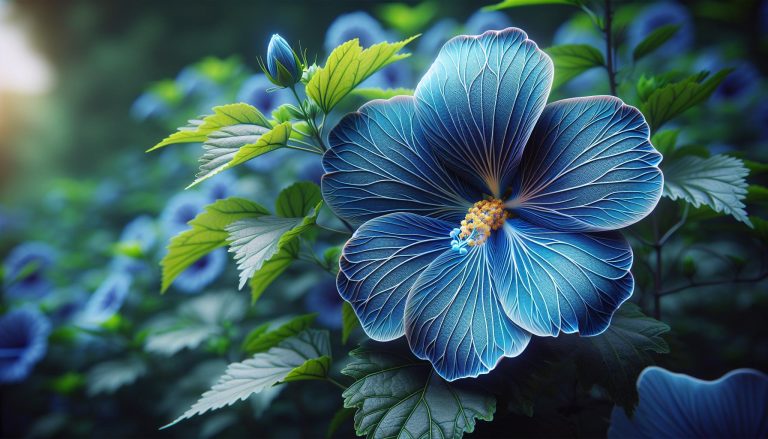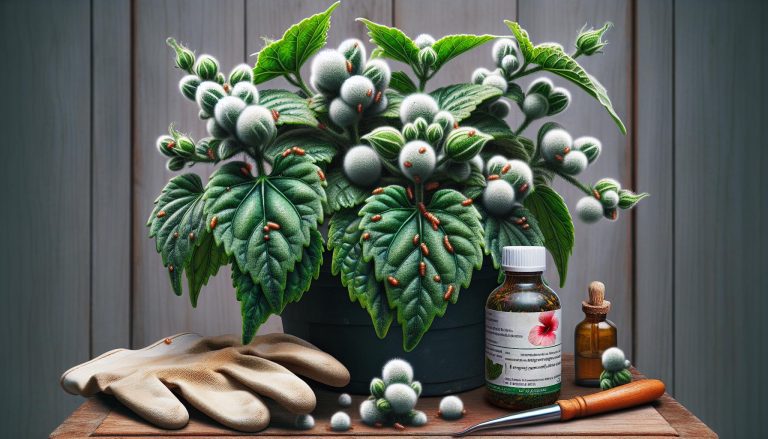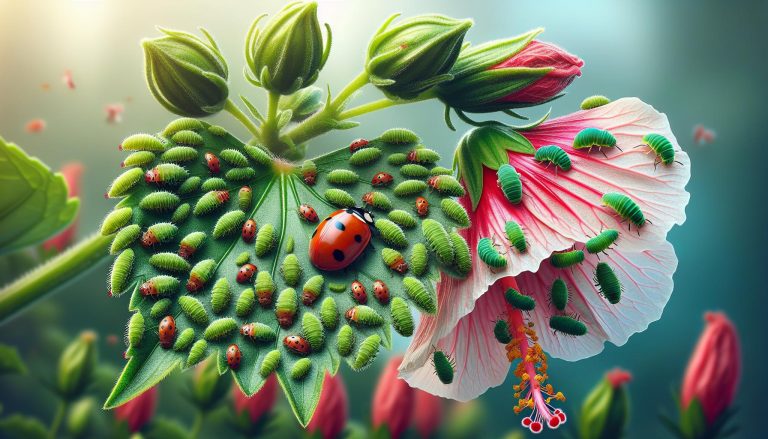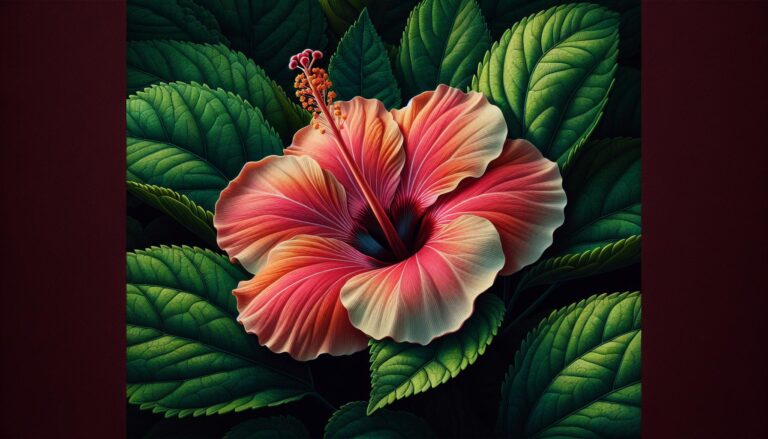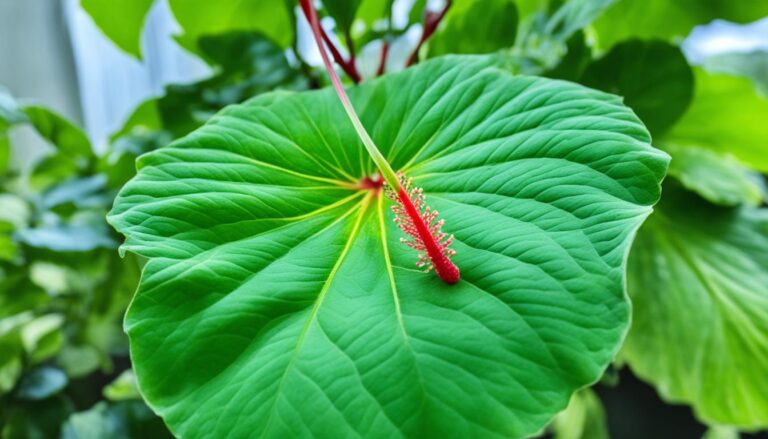Stormy Hibiscus: Growing, Uses, and Symbolism Unveiled
In the vibrant world of gardening, the stormy hibiscus stands out as a captivating marvel, offering a unique blend of beauty and resilience. Known for its striking blooms that range in color from deep purples to moody blues, this plant has captured the hearts of garden enthusiasts everywhere. It’s not just its appearance that makes the stormy hibiscus special; it’s also known for its ability to thrive in a variety of conditions, making it a versatile choice for gardeners seeking both aesthetic appeal and hardiness.
We’ve seen the stormy hibiscus become increasingly popular in recent years, and it’s easy to see why. Its dramatic flowers add a touch of mystery and elegance to any garden space, while its robust nature ensures that it can withstand the challenges that come with changing climates and environments. Whether you’re a seasoned gardener or just starting to explore the world of horticulture, the stormy hibiscus offers something for everyone. Join us as we dive deeper into the enchanting world of this extraordinary plant, uncovering the secrets behind its allure and how to make the most of its stunning beauty in your own garden.
Key Takeaways
- The stormy hibiscus is celebrated for its stunning dark-colored blooms, ranging from deep purples to moody blues, making it a unique and captivating choice for gardeners seeking both beauty and resilience.
- It thrives in a variety of conditions, adaptable from full sun to partial shade and capable of withstanding occasional droughts, making it a versatile plant for different garden styles and environments.
- Proper care including regular watering, soil with good drainage and slight acidity, and protection from extreme weather, is crucial for the stormy hibiscus to flourish and maintain its vibrant blooms.
- Beyond their aesthetic appeal, stormy hibiscus plants play an important ecological role, attracting pollinators like hummingbirds and bees, and can be integrated into rain gardens for a more sustainable gardening practice.
- Common problems such as pests, diseases, and weather-related challenges can be effectively managed through early detection and appropriate preventive measures, ensuring the health and longevity of the stormy hibiscus plants.
- The stormy hibiscus extends beyond the garden, finding applications in culinary, medicinal uses, and as a symbol of beauty and love in various cultures, highlighting its versatility and significance across different aspects of human life.
Overview of Stormy Hibiscus
Origins and Significance
The stormy hibiscus, known for its striking appearance, finds its roots in the warm climates of East Asia, from where it embarked on its journey to gardens worldwide. Highly regarded in cultures for its beauty and medicinal properties, the plant signifies many things, from delicate beauty to healing and rejuvenation. In traditional practices, parts of the hibiscus plant have been used in teas and remedies, affirming its place in the annals of natural healing and wellness. The stormy variant, with its captivating dark blooms, carries this legacy further, blending the ancient significance with modern allure.
Noteworthy Characteristics
Our fascination with the stormy hibiscus is no surprise, given its unique characteristics that set it apart from other garden varieties. This plant boasts large, robust flowers, often featuring deep red, purple, or even nearly black hues, enveloped in a mysterious and stormy aura. The flowers themselves are not just visually stunning but are also known to attract pollinators, adding a vibrant ecosystem to your garden. Beyond its beauty, the stormy hibiscus is celebrated for its resilience. It thrives in a variety of conditions, from full sun to partial shade, and can withstand occasional droughts, making it a versatile choice for gardeners looking to add dramatic flair to their outdoor spaces.
Cultivation and Care

Ideal Growing Conditions
Thriving in hardiness zones 4 through 9, the stormy hibiscus plant requires specific conditions to flourish. It achieves its full potential when exposed to full sun for at least 6 hours a day, though it also accommodates part shade with 4 to 6 hours of direct sunlight. This adaptability makes it a versatile addition to various garden styles, including cottage, eclectic, and rain gardens.
Watering plays a crucial role in the health of the stormy hibiscus. The plant has average to consistent water needs, emphasizing the importance of not allowing the soil to dry out completely. Regular, deep watering fosters robust growth, especially when conducted in the mornings to ensure moisture is well-absorbed throughout the day.
Soil quality varies from poor to fertile, with the stormy hibiscus able to adapt across this spectrum. However, it thrives best in moist, organically rich soils. Ensuring proper drainage is vital to prevent waterlogging while maintaining soil moisture. The soil’s pH should be acidic, ideally around 7.0, to promote healthy growth and vibrant blooms.
Maintenance Tips
Regular maintenance is key to preserving the stormy hibiscus’s stunning appearance and promoting its rapid growth rate. Deadheading, the process of removing spent flowers immediately, is necessary to maintain the plant’s aesthetic and encourage further blooming. In late autumn, cutting back stems to approximately 3-4 inches helps prepare the plant for its next growth cycle.
The onset of new growth in spring is a critical time for the stormy hibiscus. Slow to emerge initially, growth soon becomes rapid, necessitating frequent fertilization during the growing season to support robust development. This process not only enhances the blossoms’ quality but also strengthens the stems for a standout display.
Site selection can significantly impact the stormy hibiscus’s success. Placing the plant in a location protected from strong winds minimizes the risk of wind burn, ensuring the foliage and flowers remain in pristine condition. Good air circulation around the plant is essential to reduce the risk of diseases, highlighting the need for thoughtful placement in the garden.
Propagating the stormy hibiscus can be achieved through division or cuttings, allowing gardeners to expand their collection and share this enchanting plant with others. Whether used as a bog plant, border plant, or specimen focal point, the stormy hibiscus adds a dramatic flair to any outdoor space, captivating onlookers with its deep hues and resilience.
Garden Value and Uses

Aesthetic Appeal
Stormy hibiscus plants, with their vibrant colors and large, conspicuous flowers, significantly enhance the aesthetic appeal of any garden. They bloom from midsummer to early fall, offering a long-lasting display of pink shades that can transform a garden space into a tranquil and colorful sanctuary. These plants vary in height, typically reaching up to 30 feet, and spread between 45 to 50 feet, making them versatile for different garden styles, including cottage and eclectic themes. Their ability to serve as a specimen or focal point allows gardeners to design around them, creating dynamic and visually appealing outdoor spaces.
Environmental Impact
Apart from their visual allure, stormy hibiscus plants contribute positively to the environment. They are native to North America, fitting seamlessly into local ecosystems. Their flowers not only attract hummingbirds but are also bee-friendly, supporting the pollination process essential for a healthy and biodiverse garden. In addition, these plants have adapted to a variety of soil qualities, from poor to fertile, and require average to consistent water needs, making them an ideal choice for rain gardens. This adaptability reduces the need for chemical fertilizers and excessive watering, promoting a more sustainable and eco-friendly gardening practice. Furthermore, their rapid growth rate and deer resistance make them a reliable and low-maintenance option for gardeners looking to enhance their garden’s ecological value.
By integrating stormy hibiscus plants into the garden, we not only enhance its visual appeal but also contribute to a healthier, more vibrant ecosystem.
Common Problems and Solutions

Transitioning from the stormy hibiscus plant’s requirements and benefits, let’s delve into common challenges gardeners might face and how to tackle them effectively. Our focus will be on pests, diseases, and weather-related issues, offering practical solutions to ensure your stormy hibiscus thrives.
Pests and Diseases
Concerning pests, aphids and spider mites pose significant threats, preferring the underbelly of leaves to feed. Left unchecked, they weaken the plant. Identifying these pests early is key. A solution of mild soap and water sprayed directly onto the affected areas can deter these pests. For more persistent cases, neem oil offers an organic alternative that’s safe for the ecosystem.
Diseases such as root rot and fungal infections can also afflict stormy hibiscus plants, primarily due to improper watering practices or insufficient drainage. Symptoms include yellowing leaves, stunted growth, and wilting. Prevention lies in ensuring well-drained soil and adopting a consistent, moderate watering schedule. For infected plants, removing and discarding affected parts prevents the spread. Fungicides can be used, but always as a last resort, after trying cultural controls.
Weather-Related Challenges
Stormy hibiscus plants are quite resilient but can still suffer from extreme weather conditions. Too much sun can scorch leaves, and severe frost can damage or kill the plant. In regions where temperatures soar, providing partial afternoon shade can protect the plant from the harsh midday sun. Mulching helps retain soil moisture, offering a buffer against both excessive heat and cold.
Winter presents its challenge, particularly for stormy hibiscus planted in zones at the colder end of their tolerance. Employing winter mulch and considering container gardening for easier mobility into sheltered spaces can safeguard them during harsh winters. If an unexpected frost threatens, covering the plants overnight with burlap or a frost cloth shields them from freeze damage.
Our solutions offer a roadmap for navigating the hurdles that come with growing stormy hibiscus. Through vigilance and adopting these proactive practices, gardeners can enjoy the vibrant beauty and ecological benefits of the stormy hibiscus for seasons to come.
Beyond the Garden

Having explored the origins, care, propagation, and ecological benefits of the stormy hibiscus, along with addressing common challenges gardeners face, we now delve into its broader applications and cultural significance. The stormy hibiscus transcends the confines of the garden, finding its place in various aspects of human life. Its vibrant flowers not only beautify landscapes but also serve culinary and medicinal purposes, and carry rich symbolism and cultural importance across the globe.
Culinary and Medicinal Uses
Stormy hibiscus flowers and leaves are not just visually stunning; they’re also edible and highly nutritious. The petals, characterized by their deep, stormy colors, are commonly used to make herbal teas known for their vivid crimson hue. This tea, often enjoyed both hot and cold, isn’t just known for its refreshing taste but also for its health benefits. It’s packed with antioxidants and has been linked to lowering blood pressure and cholesterol levels, offering a natural way to support heart health.
Moreover, the petals can be used in salads, offering a citrusy flavor reminiscent of cranberries, which enriches the dish both visually and nutritionally. In various cultures, the flowers are candied or used as natural coloring in desserts, showcasing their versatility in the culinary world.
Medicinally, parts of the stormy hibiscus plant have been used to treat conditions such as fevers, stomach complaints, and even as a diuretic. Its high vitamin C content also makes it an excellent immune booster, which is particularly appreciated in natural medicine.
Symbolism and Cultural Significance
Beyond its edible and medicinal applications, the stormy hibiscus carries profound symbolism and holds significant cultural value in various societies. In many cultures, the hibiscus flower symbolizes beauty, love, and femininity. For example, in Hawaiian culture, the hibiscus is a common motif in traditional kapa cloth and is worn by women to indicate their relationship status – behind the right ear if seeking a partner, and the left if taken.
Conclusion
We’ve journeyed through the vibrant world of the stormy hibiscus, uncovering its rich tapestry from garden care to its place in culinary and cultural traditions. It’s clear this plant offers more than just aesthetic appeal; it’s a beacon for pollinators, a treasure trove of health benefits, and a symbol of beauty and love across cultures. Embracing the stormy hibiscus in our gardens means not only enhancing our landscapes but also connecting with a deeper heritage and contributing to a more sustainable and biodiverse environment. Let’s continue to nurture and celebrate the stormy hibiscus, allowing its beauty and versatility to flourish in our lives.



